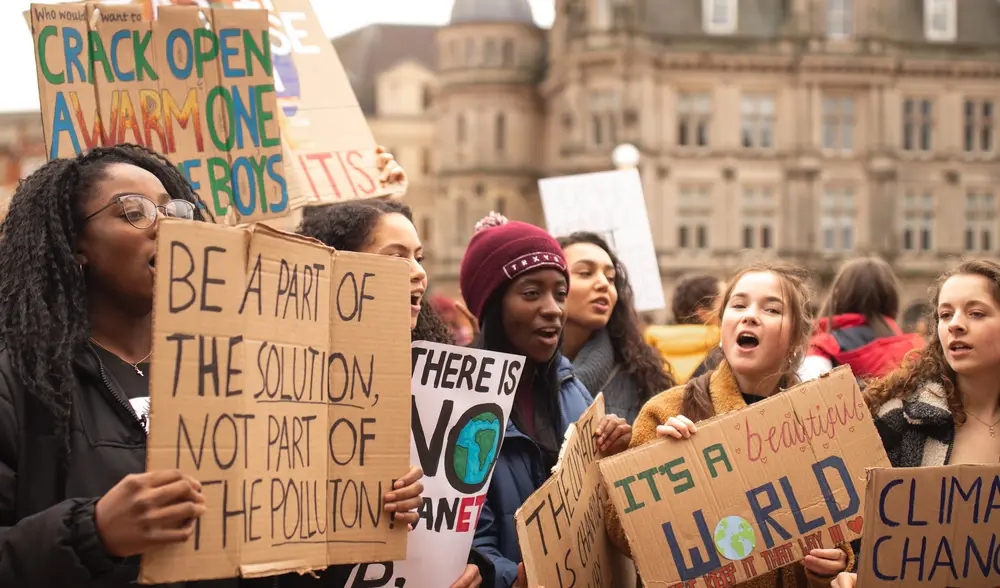Opening the green box: how useful are the green investment expectations we have?

COP26 ended as quickly as it began, with a big promise to maintain the goal of keeping global temperatures below 1.5°C degrees of warming compared to pre-industrial levels and to increase green funding to over 100 billion USD by 2025 [1]. There was also a strong emphasis on increasing funding for adaptation, not just mitigation, which includes an important aspect of climate change that has been underestimated for years.
Estimates of how much green investment will be needed to reach net zero globally range from 850 billion [2] to 4 trillion USD [3] per year, which already puts the amount promised for 2025 in a pessimistic light, and begs the question of how to increase the amount of financing for green investment.
Even those casually familiar with the decarbonization debate are familiar with headlines reading, "we need X trillion USD of green investment between now and 2050 to reach net zero" or "we are over Y million USD short every year to meet decarbonization targets".
There is no question that we need more green investment (and, just as importantly, less polluting investment) to achieve a net-zero world in 2050, but we also need to understand where the numbers behind these estimates come from and how they inform public policy [4].
The estimates behind the green investments needed to achieve net-zero are a product of what are known as Integrated Assessment Models (IAMs), which can be summarized as tools that "take approaches that integrate knowledge from two or more fields into a single framework" [5]. In the field of climate policy, these models tend to combine social, technological, atmospheric and economic variables to estimate future greenhouse gas emissions as well as their impacts (carbon sink saturation, temperature changes and their effects, etc.) [6].
These models usually rely on several complex assumptions and calculations that significantly influence their estimates. They are a black box that few understand and their legitimacy to constructively inform policy debate is questioned by experts on the area such as Robert Pyndick[7] just to name one of the most important ones.
Not only do policy makers ignore the artificial nature of the models, but they also tend to treat them as indisputable fact without understanding the narratives behind them [8], which shape the debate about the funding needed for green investments [9].
These models have been heavily criticized for being “neither theory-driven nor empirically grounded” [9], creating a world that is inherently logical but unsound.
Many models are not up to date on the rapid and unbalanced impacts of climate change. For example, temperature changes in India are far more dramatic than in the U.S., which argues for smart allocation of decarbonization efforts and adaptation funding).
Even though IAMs focus on “cost-effective” decarbonization pathways [10] and long-term goals, the models can only have so many variables, generally leaving out creative and short-term solutions and ignoring that many of these pathways have hidden costs that, if followed, would require even more funding.
For example, hard-liner positions on decarbonization such as Europe’s have brought with them such a fiscal burden that, combined with the COVID -19 pandemic, has sparked a debate on the need for a new ‘green fiscal pathway’ to deal with the level of deficit that EU member states will face during the EU Green Deal [11]. This raises the question of the extent to which this process is possible in developing countries and whether developed countries can finance it.
The dissertation by Pisani-Ferry (2021) shows how the decarbonization agenda, as well as the models for the required investments to make it happen, does not take into account its potential economic impact. A prolonged budget deficit to make the transition, a period of significant unemployment that would trigger a fall in consumption and a recession, a short-term shock to energy supply, and how to deal with the high costs of scrapping our current energy infrastructure are just some of the issues he raises [12].
The distribution of the benefits and consequences of decarbonization is also a major problem [9]. Recent studies show how the impacts of climate change have been underestimated in models [13] and wrongly perceived as generalized when the impact is different across regions. This means that adaptation investments, or better yet, decarbonization efforts, need to be accelerated in key countries to avoid long-term repair and adaptation costs.
Finally, there needs to be an important discussion about the new infrastructure needed to build an energy transition and the economic impact this could have. The models do not take into account the uneven distribution of RE technology [14], nor the increase in rare earth elements (REEs) prices that could occur if we follow the extractivist approach that many models propose [15].
For this reason, it is irrelevant to ask the question, “are we investing enough?” because the models cannot provide an accurate answer nor offer intelligent solutions to reduce the amount of investment needed to make it feasible.
We need to start looking critically at the question of green investment and making plans to reduce the growing costs necessary to reach net zero, rather than continuing to follow IAMs that may distract us from what is really important: finding new solutions to keep the decarbonization goals we have committed to avoid climate disaster.
REFERENCES
[1] Glasgow Climate Pact, 2021, link: https://unfccc.int/sites/default/files/resource/cop26_auv_2f_cover_decision.pdf
[2] Global Warming of 1.5 ºC —. (n.d.). Retrieved November 28, 2021, from https://www.ipcc.ch/sr15/
[3] IEA (2021), Net Zero by 2050, IEA, Paris https://www.iea.org/reports/net-zero-by-2050
[4] How much investment do we need to reach net zero? | Bruegel. (n.d.). Retrieved November 28, 2021, from https://www.bruegel.org/2021/08/how-much-investment-do-we-need-to-reach-net-zero/
[5] Nordhaus, William. 2013, "Integrated Economic and Climate Modeling." In Handbook of Computable General Equilibrium Modeling, edited by Peter B. Dixon and Dale W. Jorgenson, 1069‐1131. Amsterdam: North Holland, Elsevier B.V.
[6] Metcalf, Gilbert and James Stock. “The Role of Integrated Assessment Models in Climate Policy: A User's Guide and Assessment.” Discussion Paper, 2015-68, Harvard Project on Climate Agreements, Belfer Center, March 2015
[7] Pindyck, R. S. (2015). The Use and Misuse of Models for Climate Policy (Working Paper No. 21097; Working Paper Series). National Bureau of Economic Research. https://doi.org/10.3386/w21097
[8] C. Dieckhoff, Modellierte Zukunft: Energieszenarien in der wissenschaftlichen Politikberatung, transcript Verlag, 2015
[9] Ellenbeck, S., & Lilliestam, J. (2019). How modelers construct energy costs: Discursive elements in Energy System and Integrated Assessment Models. Energy Research & Social Science, 47, 69–77. https://doi.org/10.1016/j.erss.2018.08.021
[10] A. Patt, O. van Vliet, J. Lilliestam, S. Pfenninger, Will policies to promote energy efficiency help or hinder achieving a 1. 5°C climate target? Energy Effic. (2018), https://doi.org/10.1007/s12053-018-9715-8 in press
[11] A green fiscal pact | Bruegel. (n.d.). Retrieved November 28, 2021, from https://www.bruegel.org/2021/09/a-green-fiscal-pact/
[12] Pisani-Ferry, J. (2021). Climate policy is macroeconomic policy, and the implications will be significant. PIIE. https://www.piie.com/publications/policy-briefs/climate-policy-macroeconomic-policy-and-implications-will-be-significant
[13] Schewe, J., Gosling, S. N., Reyer, C., Zhao, F., Ciais, P., Elliott, J., Francois, L., Huber, V., Lotze, H. K., Seneviratne, S. I., van Vliet, M. T. H., Vautard, R., Wada, Y., Breuer, L., Büchner, M., Carozza, D. A., Chang, J., Coll, M., Deryng, D., … Warszawski, L. (2019). State-of-the-art global models underestimate impacts from climate extremes. Nature Communications, 10(1), 1005. https://doi.org/10.1038/s41467-019-08745-6
[14] Eicke, L., & Goldthau, A. (2021). Are we at risk of an uneven low-carbon transition? Assessing evidence from a mixed-method elite study. Environmental Science & Policy, 124, 370–379. https://doi.org/10.1016/j.envsci.2021.07.009
[15] Arrobas,Daniele La Porta; Hund,Kirsten Lori; Mccormick,Michael Stephen; Ningthoujam,Jagabanta; Drexhage,John Richard, 2017, The Growing Role of Minerals and Metals for a Low Carbon Future (English). Washington, D.C. : World Bank Group. http://documents.worldbank.org/curated/en/207371500386458722/The-Growing-Role-of-Minerals-and-Metals-for-a-Low-Carbon-Future

About the author
Jesus Renzullo is a first year MPP student at the Willy Brandt School, specializing in Socio-economic Development Policies and Conflict Studies and Management. He holds a bachelor’s degree in International Affairs from the Central University of Venezuela (UCV) and has worked since 2018 in the Venezuelan Think Tank Cedice Libertad, writing on the topics of Venezuelan international trade and new-age technologies. He has also worked as lecturer for the Central University of Venezuela and as exports advisor for the private sector.
~ The views represented in this blog post do not necessarily represent those of the Brandt School. ~